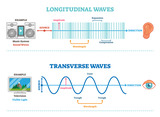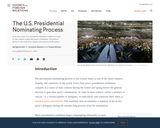
Open source materials for trimetal oxides/composites for supercapacitor applications
- Subject:
- Chemistry
- Material Type:
- Homework/Assignment
- Author:
- Vinoth SK
- Date Added:
- 04/02/2023

Open source materials for trimetal oxides/composites for supercapacitor applications

True or False Worksheet

Lectures and previous brief assignments dealt with plate tectonics, earthquakes, volcanoes and tsunamis. For the assignment, students read several articles describing potential sources for tsunamis on the east coast, including volcanic eruptions on the Canary Islands, underwater landslides off the shelf, and earthquakes. Their task is to summarize these potential sources, evaluate the risk of a tsunami on the east coast, and compare them with previously discussed risks for the west coast and Hawaii.
(Note: this resource was added to OER Commons as part of a batch upload of over 2,200 records. If you notice an issue with the quality of the metadata, please let us know by using the 'report' button and we will flag it for consideration.)

In this hands on, exploratory lesson of waves, students will learn about longitudinal and transverse waves. Through mathematical reasoning, students will describe relationships between aspects of waves and a wave’s relative amount of energy. Students will use questioning skills to push the lesson along and facilitate engagement and discovery. The use of hands on models will help the students to discover relationships and characteristics of waves and go on to create their own models. Students will be able to...identify sound waves as longitudinal waves that travel through a mediumrecognize the dB levels of everyday soundsunderstand energy causes the vibrations that allow the sound waves to travel.

Tissues are groups of cells working together. A specific tissue has similar cells which perform a particular function. In this activity we will look at various types of tissue to see how structure is related to function. You will be researching several different types of tissues. For each tissue you will include a description/picture/drawing, list at least one function and list at least one place it is found in the human body. You may use the following charts, or you may record your information in another format of your own design (google slides, etc.). You may use the internet or resource books to help you find the information.agri

In this seminar you will learn all about the many types of clouds that we have on Earth. You will use the habit of mind known as gathering data through all senses, and you will classify different types of clouds. You will explain precipitation clouds through an informational project at the end of the seminar.Standards3.2.4.A5MODELSUse models to demonstrate the physical change as water goes from liquid to ice and from liquid to vapor.

This Google Doc worksheet guides students through the process of researching a type of dance.

The Types of Information lesson is mapped to the Information Creation as a Process Frame and introduces various types of information in relation to typical research questions. Characteristics of information are discussed including what criteria can be used to identify popular, professional, and scholarly materials.

This activity is to practice learners in identifying types of sentences according to structure, simple, compound, complex or compound-complex.

This activity is to practice learners in identifying types of sentences according to structure, simple, compound, complex or compound-complex.

Tá Falado includes 46 podcast lessons on the pronunciation and grammar of Portuguese, specifically designed to help those who already speak Spanish. The lessons are built around Portuguese dialogs that are repeated in Spanish, providing a direct comparison of the two languages. All lessons include downloadable PDF files with the transcripts and notes, mp3 audio files, and blog discussions. Additionally all of the dialogs present cultural scenarios that illustrate differences between North American and Brazilian culture.

Within this collection you will find lessons, videos, handouts, and teacher guides you can use in your classroom. You will also find a brief summary of each resource with the source sited for further exploration, appropriate grade level, approximate lesson length, and learning standards.

In this section, you and your team will engage in a Landscape Analysis to uncover key structures and supports that can guide your work to support Accessibility in OER. You may or may not answer all of these questions, but this is an offering.

An interactive reference work on the UN Sustainable Development Goals with short introductions to the goals, the official translations and numbering of the 17 goals and the 169 underlying targets, zoom in / zoom out at goal or target level, powerful search function, and "deep" hyperlinks to the UN website about the goals.Compact and online available interactive reference work that can be useful in all kinds of learning activities related to the SDGs.Currently available in English, Spanish, French and Dutch.Free to use online, but also to download and "embed" in other websites (HTML5); the source code is also freely available (MMAP).

The United States is founded on the Constitution, something that not many people acknowledge in their day to day life. So this resource will help people learn and engage with the Amendments and their history.

Objectives:
Students will know the correct units for length, weight, and capacity. (In other words, students will know that ounces is NOT a unit for length.)
Students will know the abbreviations for the units of length, weight, and capacity.
Students will be able to convert within the US Customary System. For example, 13 inches = ? feet.

I created this as an assignment for one of my college courses as practice for making lessons and using OERs.

Who said that history can’t be fun…or funny!?? There are so many references to history in our daily lives and often times we don’t even recognize them! They bombard us in music lyrics, TV shows, movies, commercials, magazine ads, poems, and even funny cartoons and pictures. Having a solid foundation of historical events that have taken place will help us better understand these references when we encounter them and allow us to realize the impact history has in our lives. If for no other reason, let us learn history so we can at least laugh at the TV show or understand the joke they’re making in the cartoons when they reference these historical events! In addition, references like these can be a handy study aid, acting like mental cues to help us remember complex events and concepts. In this assignment, students will recognize that history surrounds us in pop culture by finding two examples and explaining their historical connection. They will also relate those examples to helping their classmates prepare for the final exam for the course.

This educational resource is all about how to make good choices to improve your health. It talks about how important it is to make responsible decisions and gives tips for making good choices that are both ethical and successful. It also explains how to look at situations carefully before making a decision that matches your own goals and values. The assignment emphasizes that it's really important to focus on your own health and to be true to yourself when making choices.

Introduction
The presidential nominating process in the United States is one of the most complex, lengthy, and expensive in the world. Every four years, presidential candidates compete in a series of state contests during the winter and spring before the general election to gain their party’s nomination. At stake in each contest—either a primary or caucus—is a certain number of delegates, or individuals who represent their states at national party conventions. The candidate who accumulates a majority of his or her party’s delegates during the months-long process wins the nomination.
Many presidential candidates begin campaigning informally in early-voting states like Iowa and New Hampshire more than a year before their primary events. In 2016, the primary calendar kicked off on February 1, when both the Republican and Democratic parties held their Iowa caucuses, and ends at the national conventions in July, when party delegates officially select their nominee. However, since the parties made the process more transparent in the 1970s, presumptive nominees have often emerged much earlier, sometimes only after a few weeks of voting.
What is a caucus?
Often held at school gyms, town halls, and other public venues, caucuses are local meetings that are financed and managed by the two major parties in which registered party members gather to discuss and express support for the various presidential candidates. The parties run their events a little differently. For instance, in Iowa in 2016, Republicans cast a secret ballot for their preferred candidate, while Democrats physically grouped themselves according to the candidate they supported and then took a tally. Democratic candidates must attract a minimum percentage of all the attendees to receive delegates. (Reformers in the 1970s introduced a viability threshold to weed out smaller, potentially divisive factions.)
Caucus participants are technically not choosing a presidential candidate but rather choosing delegates who will represent them in voting for their candidate at the next convention level (county, congressional district, and state) where a similar process takes place. Delegates for the national convention are selected at the state and congressional district conventions.
The caucus system (PDF) did not develop to serve a modern presidential nomination process but arose in many jurisdictions simply to help the political parties organize at the local level. Parties in states like Iowa, where caucuses are held every two years, still see the value in this grassroots system, even as most states have adopted primaries.
What is a primary?
Unlike caucuses, primaries are conducted at regular polling stations, usually paid for by the state and run by state election officials. Voters generally cast a secret ballot for their preferred candidate.
Generally, there are two types of primaries: closed, in which only voters registered with the party holding the primary can participate; and open, in which voters are not required to be registered with the party holding the primary.
Prior to the 1970s, the majority of states chose their delegates using caucuses, but after reforms were instituted in 1972 to make the nomination process more inclusive and transparent most states adopted primaries.
In 2016, just fourteen states (Alaska, Colorado, Hawaii, Idaho, Iowa, Kansas, Kentucky, Maine, Minnesota, Nebraska, Nevada, North Dakota, Washington, and Wyoming), the District of Columbia, and four U.S. territories (American Samoa, Northern Marianas, Puerto Rico, and the U.S. Virgin Islands) hold caucuses.
Why have the Iowa caucuses become so important?
A number of factors in the 1970s pushed the Iowa caucuses into the national political spotlight. First, the Democratic Party instituted reforms after its 1968 national convention in Chicago, where days of antiwar protests erupted into violence, to limit the power of party bosses and open the nomination process up to regular members. Among other things, new guidelines required state delegates to be selected within the year of the general election, which, for Iowa, meant bumping its caucuses in 1972 up from March or April, when they were typically held, to January, ahead of the New Hampshire primary. (The party needed the extra several weeks to print its rules and other caucus materials for attendees.)
Four years later, Jimmy Carter, then a little-known former governor of Georgia, took advantage of Iowa’s first-in-the-nation contest by using a surprise early win there as a springboard onto the national stage. He led a similar grassroots campaign in New Hampshire where he notched another unexpected victory.
The strategic success of Carter’s campaign helped cement the special status of the two states in the presidential nomination process, even though the number of delegates at stake in each is relatively small. In 1980, the Democratic Party changed its rules to effectively preserve Iowa’s and New Hampshire’s early positions in the nomination process, and the Republican Party followed suit.
How will the delegate process work in 2016?
In recent decades, states have competed with each other to hold primaries and caucuses earlier in the calendar—in a phenomenon known as front-loading—to draw the attention of candidates and the national media. However, the political parties have set rules in recent years to discourage front-loading and provide states that hold events later in the spring a greater role in the nomination process.
In 2016, both parties allow just four states to hold their delegate selection event in February: Iowa, New Hampshire, Nevada, and South Carolina. The remaining states and territories must wait to hold events until at least March 1. (In 2016, more than a dozen states hold events on this day, commonly referred to as Super Tuesday.)
Additionally, the Republican Party requires states with contests before March 15 to award delegates on a proportional basis rather than the winner-take-all method preferred by many state party officials. (In 2016, Florida and Ohio host the first winner-take-all contests on this day.)
Who are the delegates?
Delegates are often party activists, local political leaders, or early supporters of a given candidate. Presidential campaigns court local and state politicians for their slate of delegates because they typically bring the support of their political constituencies. Delegates can also include members of a campaign's steering committee or long-time active members of their local party organization.
How do candidates win delegates?
On the Democratic side, candidates are generally awarded delegates on a proportional basis. For instance, a candidate who receives one-third of the vote or support in a given primary or caucus receives roughly one-third of the delegates.
The rules on the Republican side are more varied. Some states award delegates on a proportional basis, some are winner-take-all (ten in 2016), while others use a hybrid system. In previous cycles, some events, including the Iowa caucus, awarded no delegates and were intended only to assess the preferences of the party faithful. Rule changes for 2016 forced states to scrap these non-binding events, sometimes called “beauty contests.”
How is the turnout for these events?
Generally the turnout in caucuses tends to be lower than in primaries. In 2012, when only the Republican nomination was contested, 6.5 percent of all eligible voters in Iowa (but approximately 20 percent of registered Republicans) participated in the state’s caucuses. (This number was 16 percent in 2016 when both parties had competitive campaigns.) In comparison, the turnout in the New Hampshire primary was 31 percent. (Turnout rates were roughly 70 percent for both states for the 2012 general election.)
How many delegates are at stake?
In 2016, a Democratic candidate must secure at least 2,382 out of 4,763 delegates to become the party’s nominee. The number of delegates allocated to each state takes into account the state’s Democratic vote in the previous three presidential elections and its assigned number of Electoral College votes.
Meanwhile, a Republican candidate must secure at least 1,237 out of 2,472 delegates to win the party’s nomination. The Republican Party allocates each state ten delegates, plus three for each congressional district, and bonus delegates for states that contributed electoral votes to the party in the previous presidential election, as well those that elected Republicans to high offices.
What are superdelegates?
Each party also reserves a certain number of delegate slots for its high-ranking officials, who generally are not bound (or are “unpledged”) to a specific candidate heading into the national convention (unlike pledged delegates). On the Republican side, these include the three members of each state’s national committee, representing less than 7 percent of party’s total delegates in 2016. (The Republican Party has instructed state delegations to bind RNC members based on voting results.)
On the Democratic side, superdelegates include not only members of the national committee, but all members of Congress and governors, former presidents and vice presidents, former leaders of the Senate and the House, and former chairs of the Democratic National Committee. This group represents about 15 percent of the party’s total delegates in 2016.
The Democratic Party’s superdelegates attracted significant media attention during the 2008 presidential primary, when then Sen. Barack Obama and Sen. Hillary Clinton were engaged in a tight nomination race that carried on until June. Many thought that superdelegates, which accounted for about 20 percent of the party’s total that cycle, would be decisive in determining the nominee.
What role can independents play?
Because independent voters are unaffiliated with any party, they do not as a group receive delegates or hold their own national nominating convention or meeting. However, many states hold so-called open primaries that allow independents to participate. And some states allow voters to switch their party affiliation the day before an election, so that independents could register as a Republican or Democrat if they support a specific candidate.
Third parties, like the Green Party, can pick delegates for their own conventions. But because third-party candidates rarely earn a large percentage of the primary vote, the candidates their delegates select tend to garner little national attention.
What happens at the national conventions?
In recent decades, the national conventions have been mostly ceremonial, simply ratifying the candidate who has secured the support of a majority of delegates. They are generally organized as media events to highlight the presidential and vice presidential nominees, party leaders, and rising stars. Over a period of three to four days, speeches and videos promoting the party’s message are interwoven with official business, including the appointment of committee members, and ratification of party rules, credentials, and policy platforms.
However, in the rare presidential election cycle in which a clear frontrunner for either party does not emerge during the primary and caucus process, which last occurred in 1952, several rounds of voting at the national convention may be needed to crown a nominee. Pledged delegates are generally required to vote for a specific candidate in the first ballot (unpledged are not), but they may be allowed to vote for any candidate in subsequent ballots.
https://www.cfr.org/backgrounder/us-presidential-nominating-process